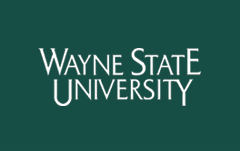Access Type
Open Access Dissertation
Date of Award
January 2020
Degree Type
Dissertation
Degree Name
Ph.D.
Department
Biomedical Engineering
First Advisor
Mai T. Lam
Second Advisor
Jian-Ping Jin
Abstract
Creation of an in vitro atherosclerotic disease model using the novel Ring Stacking Method. Singular self-assembling tissue rings made up smooth muscle cells and fibrin hydrogel are stacked on one another to create a tissue engineered vessel. These biologically engineered blood vessels are then seeded with endothelial cells via combined static rotational and dynamic bioreactor in order to create a functional intima layer. Early stage atherosclerosis was induced via the addition of oxidized low-density lipoproteins (ox-LDL) to the fibrin hydrogel that creates the media layer of the engineered vessel. After the creation of the intima layer the engineered vessel was then statically seeded with THP-1 monocytes differentiated into M1 macrophages via phorbol 12-myristate 13-acetate (PMA), lipopolysaccharide (LPS) and interferon-gamma (IFN-gamma) for 24 hours over the course of 3 days. On the second and third day calci-protein particles (CPPs) along with fibroblast-derived growth factor (FGF) and platelet-derived growth factor (PDGF) were added to the THP-1 differentiation suspension. Following static macrophage seeding the engineered disease vessel was frozen, sectioned and stained via an Oil Red O stain to visualize the macrophage migration and uptake of the ox-LDLs in the hydrogel. Late stage atherosclerotic calcification was characterized via the incorporation of CPPs into engineered vessels. These vessels were mechanically tested, and the data was incorporated into a system coupled computer fluid dynamic (CFD) simulation via ANSYS 19. Engineered disease media (EDM) rings pre-seeded with smooth muscle cells, ox-LDLs, undifferentiated THP-1 cells and CPPs were mechanically and histologically characterized.
Recommended Citation
Pinnock, Cameron Brandon, "In Vitro Atherosclerosis Disease Model Via The Ring Stacking Method" (2020). Wayne State University Dissertations. 2503.
https://digitalcommons.wayne.edu/oa_dissertations/2503
Included in
Biomedical Engineering and Bioengineering Commons, Nanoscience and Nanotechnology Commons
